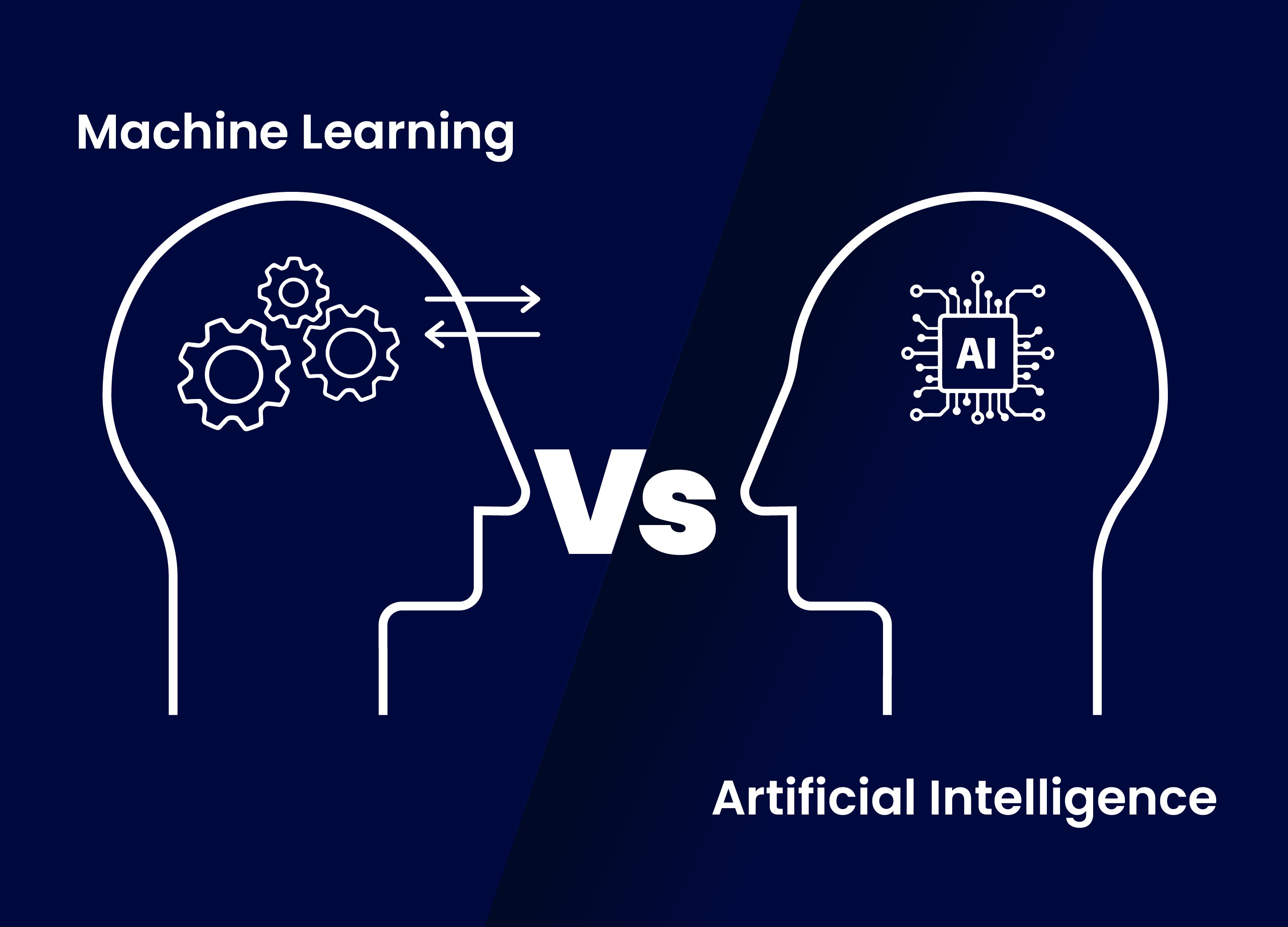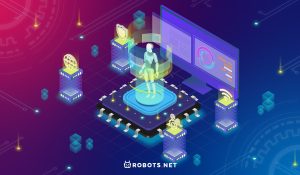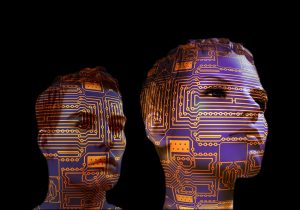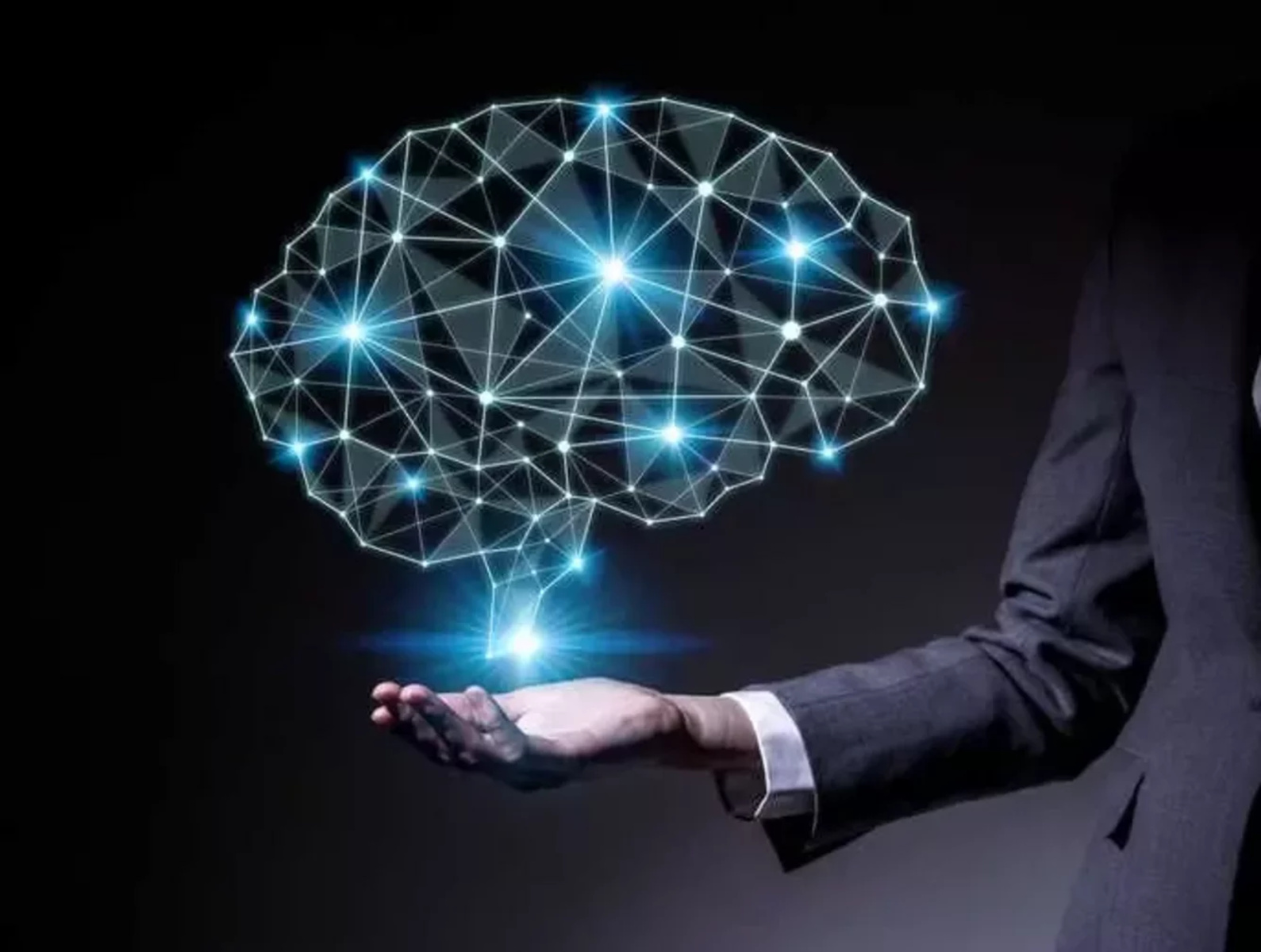Introduction
Welcome to the world of cutting-edge technology where Artificial Intelligence (AI) and Machine Learning (ML) play a pivotal role in revolutionizing various industries. These terms are often used interchangeably, but they have distinct definitions and functions. Understanding the differences and relationship between AI and ML is crucial for grasping their impact on businesses and society.
Artificial Intelligence refers to the development of computer systems that possess the ability to perform tasks that would typically require human intelligence. AI aims to simulate human-like thinking and decision-making processes through algorithms and computational models. It encompasses a wide range of applications, including speech recognition, image processing, natural language processing, and problem-solving. AI systems can analyze vast amounts of data, detect patterns, and make informed predictions.
Machine Learning, on the other hand, is a subset of AI and refers specifically to the ability of computer systems to learn autonomously without being explicitly programmed. Rather than following predefined rules, ML algorithms use statistical techniques to adapt and improve their performance over time as they analyze and process data. ML enables computers to “learn” and make predictions or decisions based on patterns and insights discovered from historical data.
Despite their differences, AI and ML are closely related and often work in tandem to achieve sophisticated outcomes. AI systems can utilize ML techniques to train and improve their models, allowing them to enhance their decision-making abilities.
The relationship between AI and ML can be likened to a parent-child dynamic. AI serves as the umbrella term, encompassing all aspects of creating intelligent systems, while ML is a subset that focuses on one specific approach to achieving AI – the ability to learn and improve from data.
The importance of AI and ML in various industries cannot be overstated. From healthcare and finance to marketing and transportation, organizations are harnessing the power of these technologies to drive innovation, increase efficiency, and gain a competitive edge. AI and ML have the potential to transform entire industries and reshape the way we live and work.
However, with great possibilities come challenges. As AI and ML continue to advance, concerns about privacy, security, ethics, and the potential for job displacement arise. It is essential to strike a balance between leveraging the benefits of AI and ML while addressing these emerging challenges.
In this article, we will explore the differences between AI and ML, their relationship, the training and learning processes involved, their scope and applications, as well as the limitations and challenges they present. By understanding these concepts, we can appreciate the transformative power of AI and ML and navigate their implications in the ever-evolving technological landscape.
Defining Artificial Intelligence
Artificial Intelligence (AI) is a branch of computer science that focuses on creating intelligent machines capable of performing tasks that typically require human intelligence. It encompasses a broad range of technologies, algorithms, and methodologies that aim to replicate or simulate human-like intelligence in computer systems.
AI systems are designed to perceive their environment, understand and interpret data, reason and make informed decisions, and learn from experience. These systems are built upon various techniques, including natural language processing, computer vision, knowledge representation, problem-solving, and decision-making algorithms.
The main goal of AI is to develop machines that can exhibit behaviors that imitate or surpass human capabilities. These behaviors may include understanding and responding to natural language, recognizing and processing complex images or videos, understanding contextual information, reasoning and problem-solving, and even exhibiting emotions and empathy.
There are two types of AI: Narrow AI and General AI. Narrow AI, also known as Weak AI, refers to AI systems that are designed and trained for specific tasks or domains. These systems excel in a particular area, such as speech recognition or image processing, but their intelligence is limited to that specific task. Examples of Narrow AI systems include virtual assistants like Siri and Alexa, recommendation algorithms, and self-driving cars.
On the other hand, General AI, also known as Strong AI, refers to AI systems that possess a general and adaptable intelligence similar to that of a human being. These systems would be capable of understanding and performing any intellectual task that a human can do. However, the development of General AI is still in the realm of science fiction and has not yet been achieved.
Artificial Intelligence has found applications in various industries and fields. In healthcare, AI is being used to assist in diagnosing diseases and analyzing medical images. In finance, AI algorithms are applied for fraud detection, risk assessment, and algorithmic trading. In marketing, AI is utilized for personalized recommendations and targeted advertising. In transportation, AI is enabling the development of self-driving cars.
The field of artificial intelligence continues to evolve at a rapid pace. Advances in machine learning, deep learning, and neural networks have significantly contributed to the progress of AI systems. As technology continues to advance, AI has the potential to revolutionize industries, improve efficiency, and enhance the quality of our lives.
Defining Machine Learning
Machine Learning (ML) is a subset of Artificial Intelligence (AI) that focuses on the development of computer systems capable of learning and improving from data without explicit programming. It is an algorithmic approach that enables computers to automatically analyze and interpret large amounts of data, detect patterns, and make predictions or decisions based on those patterns.
At the core of machine learning is the concept of training a model using data. The model is initially created with predefined parameters or rules, but it is through the training process that the model learns and adapts. The training phase involves feeding the model with a diverse dataset, allowing it to find correlations, patterns, and statistical relationships within the data.
There are several types of machine learning algorithms, including supervised learning, unsupervised learning, and reinforcement learning. In supervised learning, the model learns from labeled examples, in which both the input and the desired output are provided. The model then generalizes from the labeled examples to make predictions on new, unseen data. Supervised learning is commonly used for tasks such as image classification, sentiment analysis, and spam detection.
Unsupervised learning, on the other hand, is used when the data is unlabeled or does not have predefined classifications. The algorithms in unsupervised learning aim to find patterns or groupings within the data without any specific guidance. Clustering algorithms, anomaly detection, and dimensionality reduction are examples of unsupervised learning techniques.
Reinforcement learning is a type of machine learning where an agent learns how to interact with an environment to maximize a reward signal. The agent takes actions in the environment, receives feedback in the form of rewards or penalties, and adjusts its behavior to maximize the cumulative reward over time. This type of learning is commonly used in robotic control, game playing, and autonomous decision-making.
Machine learning has gained significant popularity and success in various fields. It has been successfully applied in speech recognition, natural language processing, recommendation systems, image and video processing, and many other domains. Machine learning algorithms have enabled major advancements in technologies such as autonomous vehicles, virtual assistants, and personalized medicine.
One of the key advantages of machine learning is its ability to handle complex and large datasets. ML algorithms can automatically extract relevant features and patterns from the data, leading to more accurate predictions and insights. Additionally, machine learning models can continuously learn and adapt to new data, improving their performance over time.
However, machine learning also comes with its challenges and limitations. It requires significant amounts of high-quality data for training, and the quality of the training data directly impacts the performance of the model. ML models can also suffer from biases and ethical concerns, as they learn from human-generated data that may contain implicit biases. The interpretability and explainability of ML models can also be challenging, as they often work as black boxes.
Despite these challenges, machine learning continues to advance and redefine industries. Its applications are vast and continuously expanding, offering immense potential for innovation, automation, and problem-solving.
Different Approaches
When it comes to the field of Artificial Intelligence (AI) and Machine Learning (ML), there are different approaches employed to achieve intelligent systems and models. These approaches vary in terms of their underlying methodologies, techniques, and objectives. Understanding the different approaches can help us appreciate the diversity and versatility of AI and ML.
One approach to AI is known as rule-based or symbolic AI. This approach involves explicitly encoding knowledge and rules into the AI system. The rules are typically created by human experts and represent a set of logical statements or if-then conditions. Symbolic AI focuses on logical reasoning and symbolic manipulation to solve problems. However, one drawback of this approach is that it requires extensive manual effort to define the rules, which can be challenging for complex tasks.
Another approach is statistical or machine learning-based AI. This approach leverages statistical techniques and algorithms to enable machines to learn from data. Machine learning algorithms, such as regression, decision trees, and neural networks, are used to extract patterns, trends, and relationships from the data. By training on labeled or unlabeled data, these algorithms can make predictions, classify data, or cluster similar instances. Machine learning is widely used in various applications, including image and speech recognition, natural language processing, and recommendation systems.
Deep learning is a subset of machine learning that employs artificial neural networks with multiple layers to process complex data. It has gained prominence in recent years due to its ability to achieve state-of-the-art performance in tasks like image recognition and speech synthesis. Deep learning models learn hierarchies of representations from data, allowing them to capture intricate patterns and features. This approach requires a large amount of labeled data and computational resources but has proven to be highly effective in several domains.
Evolutionary algorithms are yet another approach in AI. These algorithms draw inspiration from the principles of natural evolution and genetics to optimize solutions to complex problems. Evolutionary algorithms utilize techniques such as genetic algorithms, genetic programming, and swarm intelligence to create populations of candidate solutions and iteratively refine them through selection, crossover, and mutation operations. This approach has been successfully applied in tasks such as optimization, robotics, and simulation-based modeling.
Hybrid approaches are also prevalent in AI and ML. These approaches combine multiple techniques and methodologies to leverage the strengths of different approaches. For example, a hybrid approach may use symbolic AI techniques for knowledge representation and reasoning, combined with machine learning for pattern recognition or decision making.
The choice of approach in AI or ML depends on several factors, including the nature of the problem, the availability of data, computational resources, and the desired outcomes. Different approaches have their advantages and disadvantages, and the selection of the appropriate approach requires careful consideration of these factors.
It is important to note that the field of AI and ML is constantly evolving, and new approaches and techniques are continuously being developed. Researchers and practitioners are always exploring innovative ways to enhance the capabilities and applications of intelligent systems.
Relationship between Artificial Intelligence and Machine Learning
Artificial Intelligence (AI) and Machine Learning (ML) are two interconnected fields that work together to achieve intelligent systems. While the terms are often used interchangeably, it is crucial to understand the relationship between AI and ML and how they complement each other.
AI is the broader concept, encompassing the development of computer systems that exhibit intelligent behaviors. It focuses on creating machines that can perceive and understand the surrounding world, reason and make decisions, and learn from experiences. AI encompasses various techniques, methodologies, and approaches, including rule-based systems, statistical methods, and machine learning algorithms, among others.
Machine Learning, on the other hand, is a subset of AI that focuses specifically on the ability of machines to learn from data without being explicitly programmed. ML algorithms enable machines to analyze large datasets, discover patterns, and generate insights or make predictions based on the learned patterns. ML techniques are instrumental in training AI systems and improving their decision-making capabilities.
In essence, ML can be seen as a practical application of AI. It provides the tools and methods for AI systems to learn and adapt, making them more intelligent and capable of performing sophisticated tasks. ML algorithms are used to train AI models by feeding them with relevant data and optimizing their parameters through iterative learning processes.
Furthermore, ML algorithms can enhance the performance of AI systems by enabling them to handle complex and diverse datasets. ML techniques excel in extracting patterns, trends, and relationships from large volumes of data, enabling AI systems to gain valuable insights and make informed decisions.
On the other hand, AI provides the broader framework and context for ML. AI systems encompass more than just machine learning—they incorporate other components, such as knowledge representation, natural language processing, and reasoning, to achieve a more comprehensive intelligence. AI systems may use ML techniques as part of their overall architecture, but they also incorporate other strategies to handle uncertainty, engage in complex reasoning, and exhibit human-like behaviors.
It is important to note that while AI and ML have a strong relationship, they are not synonymous. AI encompasses a broader spectrum of technologies and methodologies, while ML focuses specifically on the approach of learning from data. ML is a critical component of AI, but AI extends beyond ML by incorporating additional aspects of human-like intelligence.
The symbiotic relationship between AI and ML has resulted in significant advancements in various fields. From speech recognition and image processing to recommendation systems and autonomous vehicles, AI and ML have transformed industries and revolutionized the way we interact with technology.
As AI and ML continue to evolve, their relationship will become even more intertwined. Breakthroughs in ML algorithms and techniques will enable the development of more intelligent AI systems, while advancements in AI will provide valuable contexts and applications for ML. This synergy between AI and ML holds immense potential for driving innovation, creating new opportunities, and advancing our understanding of intelligent systems.
Training and Learning
Training and learning are fundamental processes in the fields of Artificial Intelligence (AI) and Machine Learning (ML). These processes allow machines to acquire knowledge, improve performance, and adapt to new data and situations. Understanding how training and learning occur is essential for grasping the capabilities and potential of AI and ML algorithms.
In ML, the training process involves presenting the algorithm with a set of labeled or unlabeled data to learn from. Labeled data carries both the input and the desired output, while unlabeled data consists only of the input. The training data contains examples that the ML algorithm uses to identify patterns, relationships, and statistical correlations.
Supervised learning is a common approach in ML, where the algorithm is trained on labeled data. During training, the algorithm learns from the input-output pairs and develops a model that can make predictions or classify new, unseen data. The algorithm adjusts its internal parameters, such as weights and biases, to minimize the difference between its predictions and the desired outputs.
Unsupervised learning, on the other hand, involves training on unlabeled data. The algorithm aims to discover underlying patterns, structures, or clusters within the data without any prior knowledge about the output. Unsupervised learning algorithms use techniques such as clustering, dimensionality reduction, and anomaly detection to organize and extract meaningful insights from the data.
Reinforcement learning is another approach to training that involves an agent interacting with an environment. The agent takes actions, receives rewards or penalties based on its actions, and learns to maximize cumulative rewards over time. Reinforcement learning algorithms employ techniques such as value iteration, policy optimization, and Q-learning to find the optimal policies or strategies for decision-making.
Once trained, ML models can make predictions or decisions on new, unseen data. This is known as the inference or testing phase. The performance of the model is evaluated based on its ability to generalize well to unseen data and produce accurate results. Techniques such as cross-validation and metrics like accuracy, precision, and recall are used to measure the model’s performance.
It is worth noting that training and learning in AI extend beyond traditional ML algorithms. In AI systems, training involves more than just updating model parameters. It may also include capturing and representing knowledge, learning through human inputs or interactions, or even refining logical reasoning processes.
The learning process in AI and ML is not limited to a one-time training phase. Both AI and ML systems can continuously learn and improve their performance over time. This is achieved through techniques such as online learning, where the model is updated with new data as it becomes available, and transfer learning, where knowledge and insights learned from one task or domain are applied to another.
Training and learning in AI and ML are iterative processes, driven by the availability of data, modeling techniques, and computational resources. As technology continues to advance, training and learning will become more efficient and effective, enabling AI and ML models to tackle increasingly complex tasks and provide valuable solutions to real-world problems.
Scope and Applications
The scope of Artificial Intelligence (AI) and Machine Learning (ML) is vast, encompassing a wide range of industries and applications. The capabilities of AI and ML models have been harnessed to address complex problems, automate processes, improve efficiency, and enhance decision-making. Let’s explore the diverse scope and applications of AI and ML.
In healthcare, AI and ML have the potential to transform patient care, diagnosis, and treatment. AI algorithms can analyze medical images, such as X-rays and MRIs, to assist radiologists in identifying abnormalities. ML models can predict disease outcomes and assist physicians in making personalized treatment plans. AI-powered virtual assistants can provide patient education and support, improving the overall healthcare experience.
AI and ML are revolutionizing the finance industry by providing advanced analytics and risk management. ML algorithms can analyze vast datasets and detect patterns to identify fraudulent activities, reducing financial fraud. AI chatbots and virtual assistants offer personalized financial advice and support customer inquiries. Algorithmic trading systems utilize ML techniques to analyze market trends and make strategic investment decisions.
In marketing, AI and ML are used to enhance customer engagement and optimize advertising campaigns. ML algorithms analyze customer data to create personalized recommendations, improving cross-selling and upselling opportunities. AI-powered chatbots and conversational AI systems provide real-time customer support, enhancing customer satisfaction. Predictive analytics help marketing professionals anticipate customer behavior and optimize marketing strategies.
The transportation industry is being transformed by AI and ML with the development of autonomous vehicles. ML algorithms enable self-driving cars to analyze sensor data, detect objects, and navigate safely. AI algorithms provide traffic predictions and optimize route planning, reducing congestion and improving transportation efficiency. ML techniques are also used in logistics to optimize supply chain management and route optimization.
In the field of education, AI and ML have the potential to personalize learning experiences for students. Adaptive learning platforms use ML algorithms to analyze student progress, identify areas of strengths and weaknesses, and provide customized learning paths. AI-powered tutoring systems offer interactive and personalized learning support. Natural language processing enables intelligent tutoring systems, chatbots, and virtual assistants to provide real-time feedback and assistance.
These are just a few examples of the numerous applications of AI and ML. From agriculture to manufacturing, from cybersecurity to entertainment, AI and ML are being applied in various domains to drive innovation, automation, and problem-solving. The scope of AI and ML continues to expand as research and development in these fields advance.
The future potential of AI and ML is immense. Improved algorithms, increased computational power, and the availability of big data are driving further advancements in AI and ML applications. AI and ML have the ability to revolutionize industries, create new job opportunities, and address complex societal challenges. Exploring and harnessing the capabilities of AI and ML will play a crucial role in shaping the future of technology and its impact on our lives.
Limitations and Challenges
While Artificial Intelligence (AI) and Machine Learning (ML) have immense potential and are transforming various industries, they also face certain limitations and challenges that need to be considered. Understanding these limitations is crucial for the responsible and ethical application of AI and ML technologies.
One of the key challenges is the requirement of large amounts of high-quality data for training reliable ML models. ML algorithms heavily rely on data to learn patterns and make accurate predictions. Obtaining and labeling large datasets can be time-consuming and costly, especially in domains where data collection is challenging, such as healthcare or sensitive industries.
Bias in AI is another significant concern. AI models are trained on historical data, and if the data contains biases or reflects societal prejudices, the AI models can perpetuate and amplify those biases. This can lead to unfair or discriminatory outcomes in areas such as hiring, lending, and criminal justice. Addressing biases in AI systems requires careful consideration of data collection, algorithm design, and ongoing monitoring and evaluation.
Interpretability and explainability of AI and ML models are additional challenges. Many ML models, particularly deep learning models, operate as “black boxes,” making it difficult to understand how they arrived at a particular decision or prediction. This lack of transparency can lead to mistrust and hinder the adoption of AI systems in critical domains where explainability is essential, such as healthcare or finance.
Security and privacy concerns are significant challenges in AI and ML. ML models trained on sensitive data, such as medical records or financial information, can be vulnerable to attacks, including adversarial attacks where subtle manipulations of input data can result in incorrect predictions. Ensuring robust security measures, ethical data handling, and privacy-preserving techniques is crucial in the development of AI and ML systems.
Another limitation in AI and ML is the inability of models to deal with uncertainty or unexpected scenarios. ML models are trained on historical data and may struggle to handle situations that deviate from their training distribution. They are often susceptible to adversarial examples or scenarios that were not accounted for during training. Addressing and mitigating these uncertainties in AI systems is an ongoing research challenge.
Ethical considerations are paramount in the development and deployment of AI and ML technologies. Questions of fairness, transparency, accountability, and the potential impact on jobs and societal norms require thoughtful and responsible decision-making. Robust ethical frameworks, guidelines, and regulations are needed to ensure that AI and ML systems are developed and utilized in a manner that respects values and safeguards against potential negative consequences.
Lastly, the impact of AI and ML on employment is a concern. While these technologies offer new opportunities and efficiencies, they may also result in job displacement. It is essential to plan and prepare for the potential societal shifts and equip individuals with the skills needed to thrive in an AI-driven world.
By acknowledging and addressing these limitations and challenges, we can foster the development of responsible and beneficial AI and ML technologies. Collaborative efforts from researchers, policymakers, and society as a whole are crucial in navigating these challenges and shaping the ethical and sustainable future of AI and ML.
Conclusion
The fields of Artificial Intelligence (AI) and Machine Learning (ML) have had a profound impact on numerous industries, driving innovation, automation, and decision-making. AI and ML technologies offer immense potential in addressing complex problems, personalizing experiences, and improving the efficiency and accuracy of systems.
AI encompasses a wide range of techniques and methodologies, while ML focuses specifically on the ability of machines to learn from data. ML algorithms enable AI systems to analyze large datasets, discover patterns, and make predictions or decisions based on learned insights. The relationship between AI and ML is symbiotic, with ML providing the practical application of learning from data, enhancing the capabilities of AI models.
The scope of AI and ML is vast, with applications in healthcare, finance, marketing, transportation, education, and many other domains. AI and ML are transforming industries, improving patient care, optimizing financial strategies, enhancing customer experiences, and revolutionizing transportation systems.
However, AI and ML also face limitations and challenges. Collecting high-quality data, addressing biases, ensuring interpretability and explainability, securing systems, dealing with uncertainty, and navigating ethical considerations are critical challenges that need to be addressed for the responsible development and deployment of AI and ML technologies.
Despite these challenges, the future of AI and ML holds immense potential. Advances in algorithms, computational power, and the availability of big data continue to drive progress in these fields. Through ongoing research, collaboration, and ethical considerations, AI and ML have the power to reshape industries, create new job opportunities, and address complex societal challenges.
As we move forward, it is essential to balance the incredible possibilities that AI and ML offer with the responsibilities they entail. Developing robust ethical guidelines, emphasizing transparency and fairness, ensuring data privacy and security, and promoting inclusivity in AI and ML systems are essential steps to harnessing the full potential of these technologies.
With continued advancements and a mindful approach, AI and ML have the capacity to revolutionize our world, improving lives, transforming industries, and driving societal progress. It is our responsibility to steward these technologies in a way that aligns with our values and ensures a positive and sustainable future for all.

























